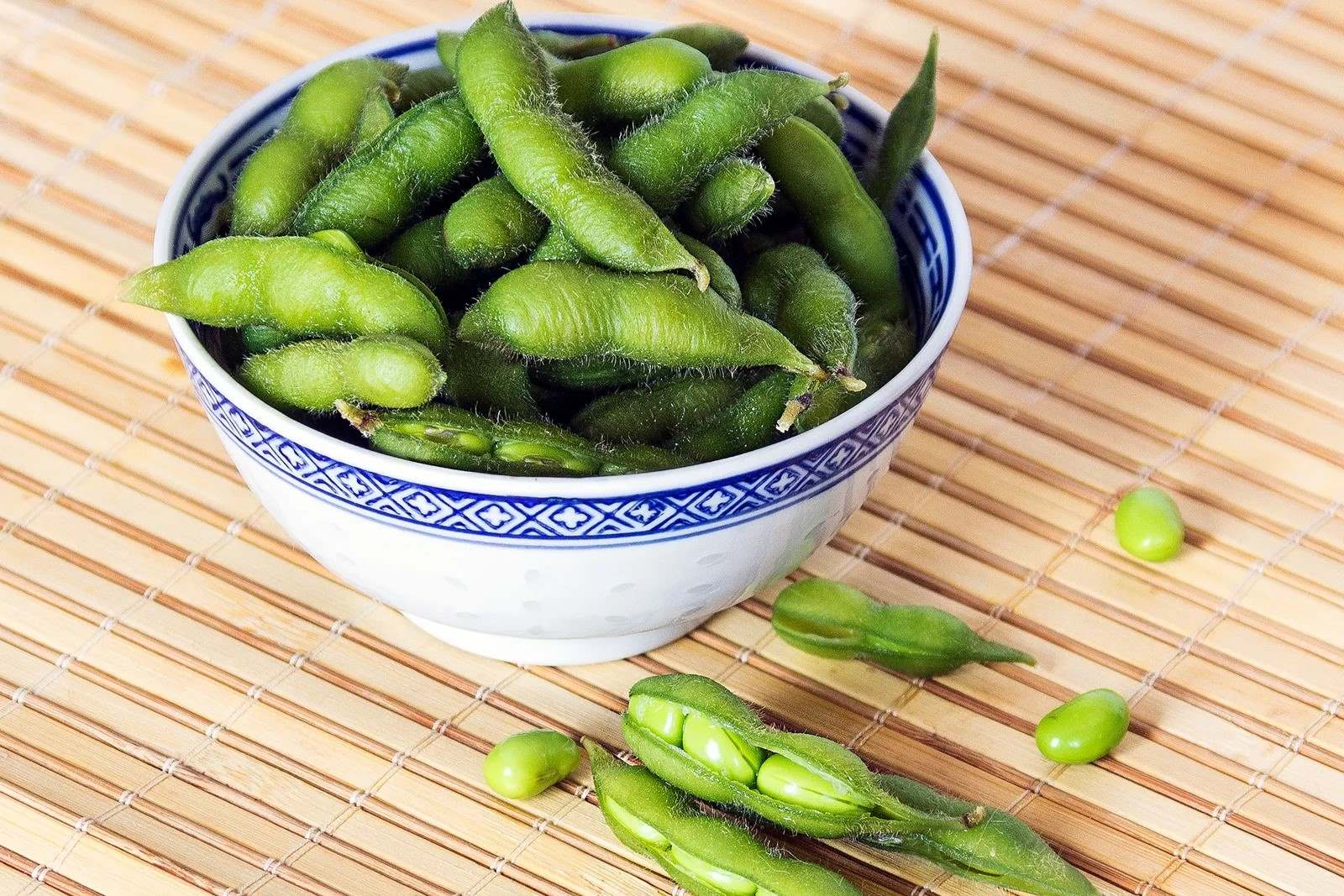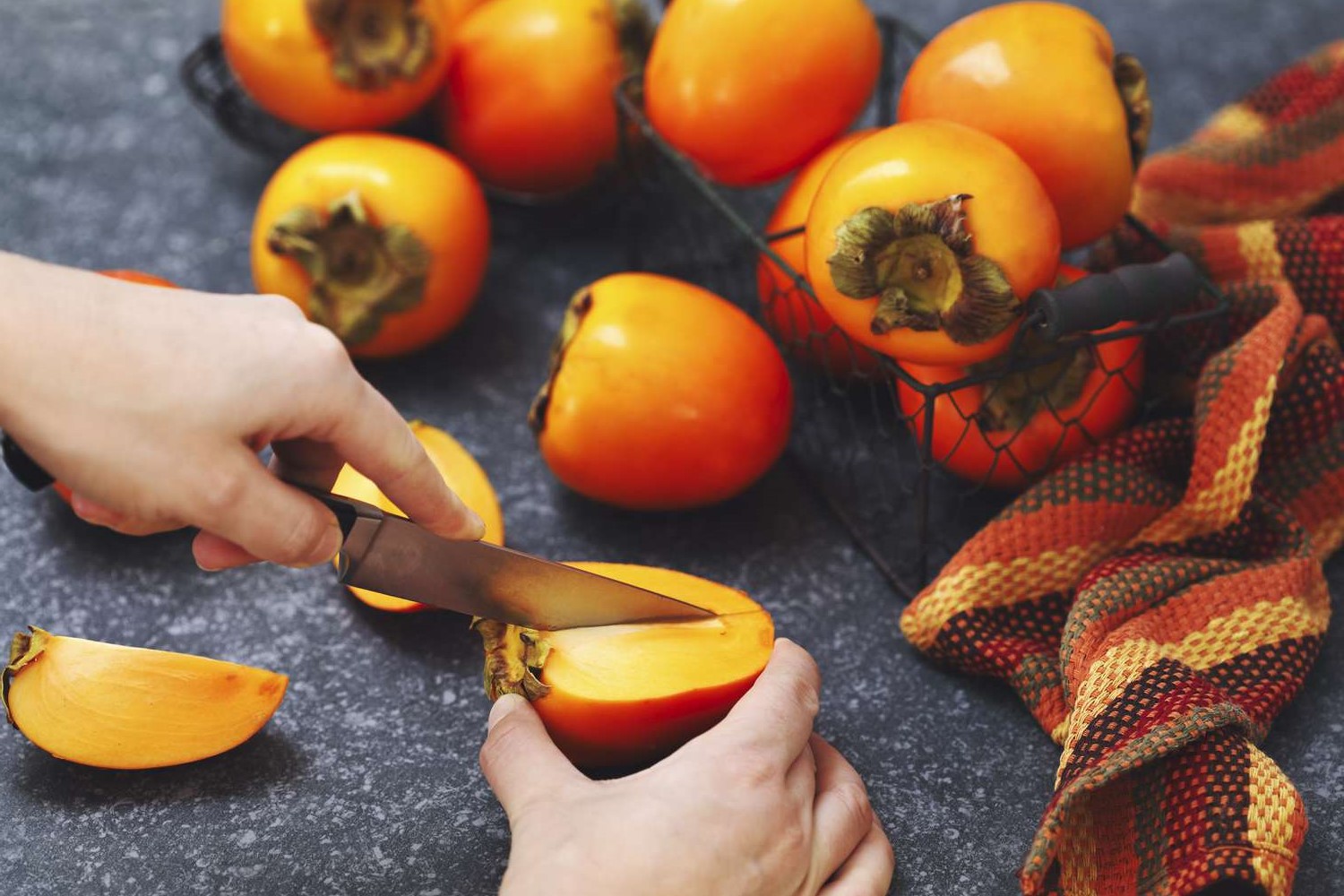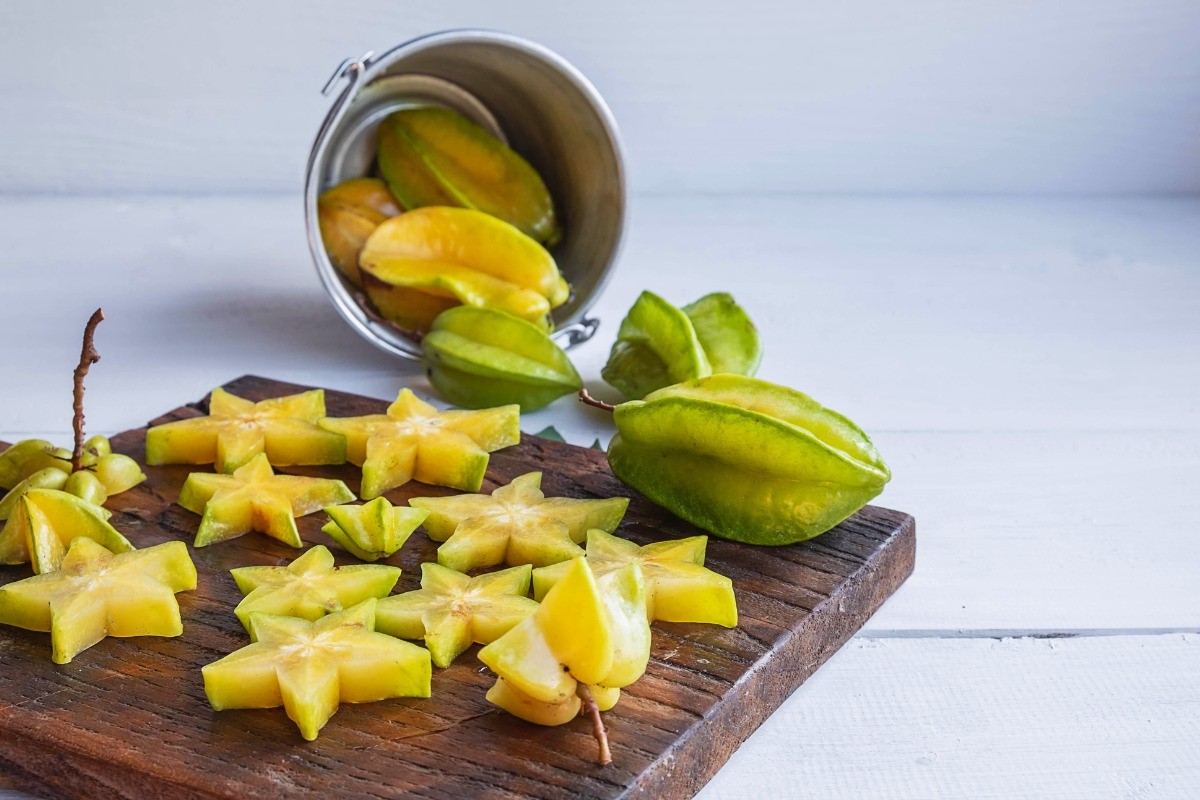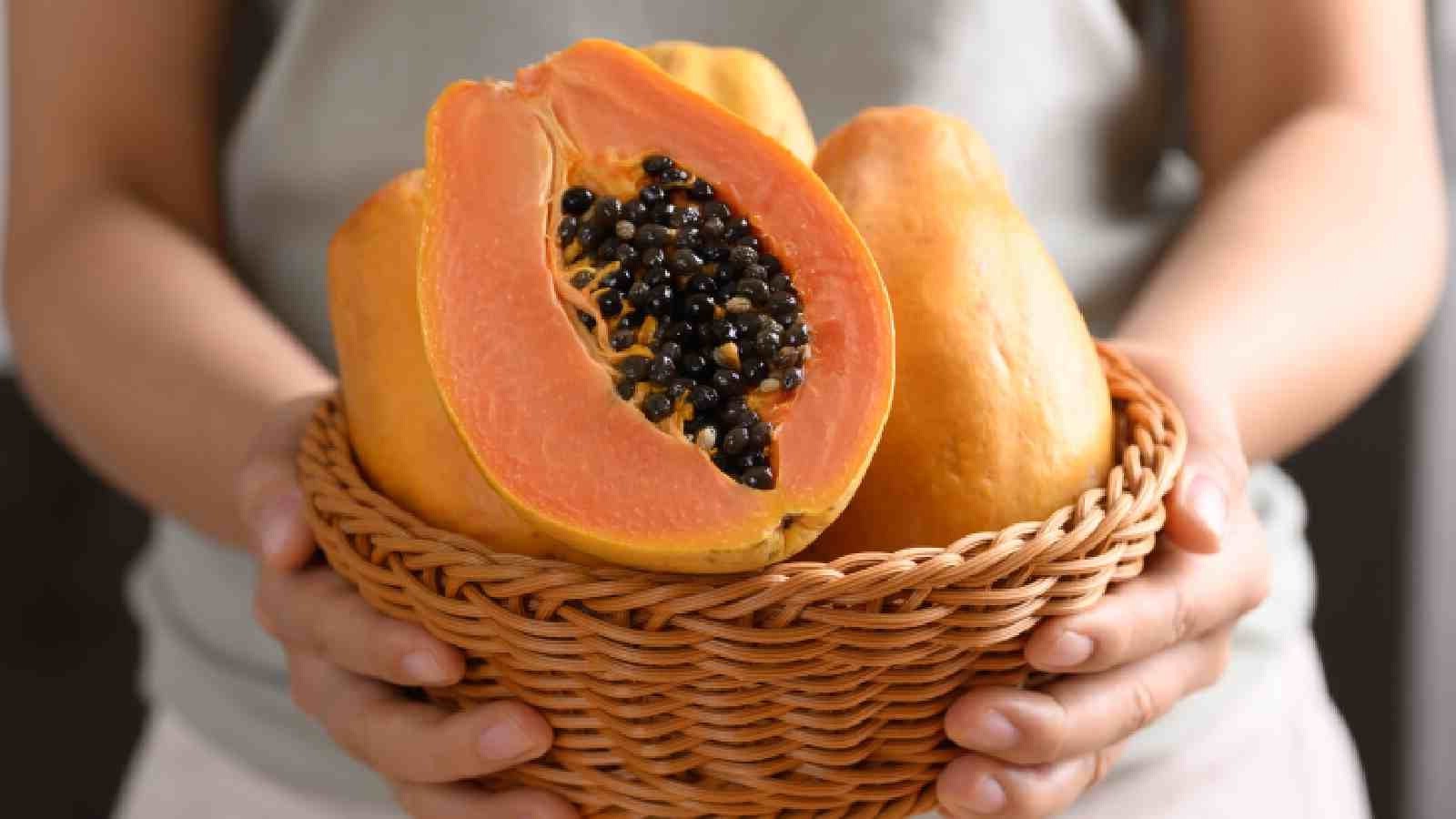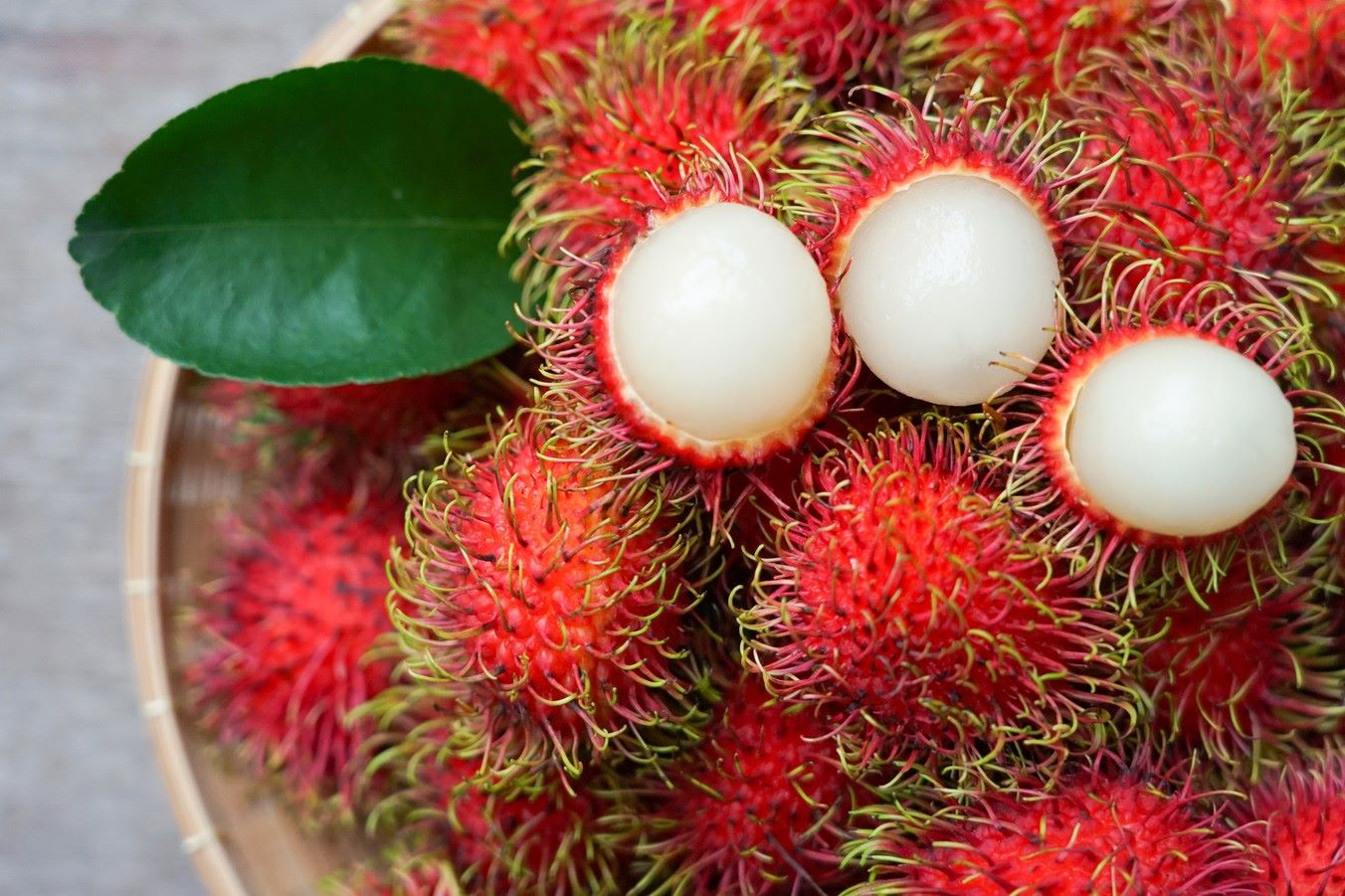Home>Food and Cooking>How To Eat Dragon Fruit
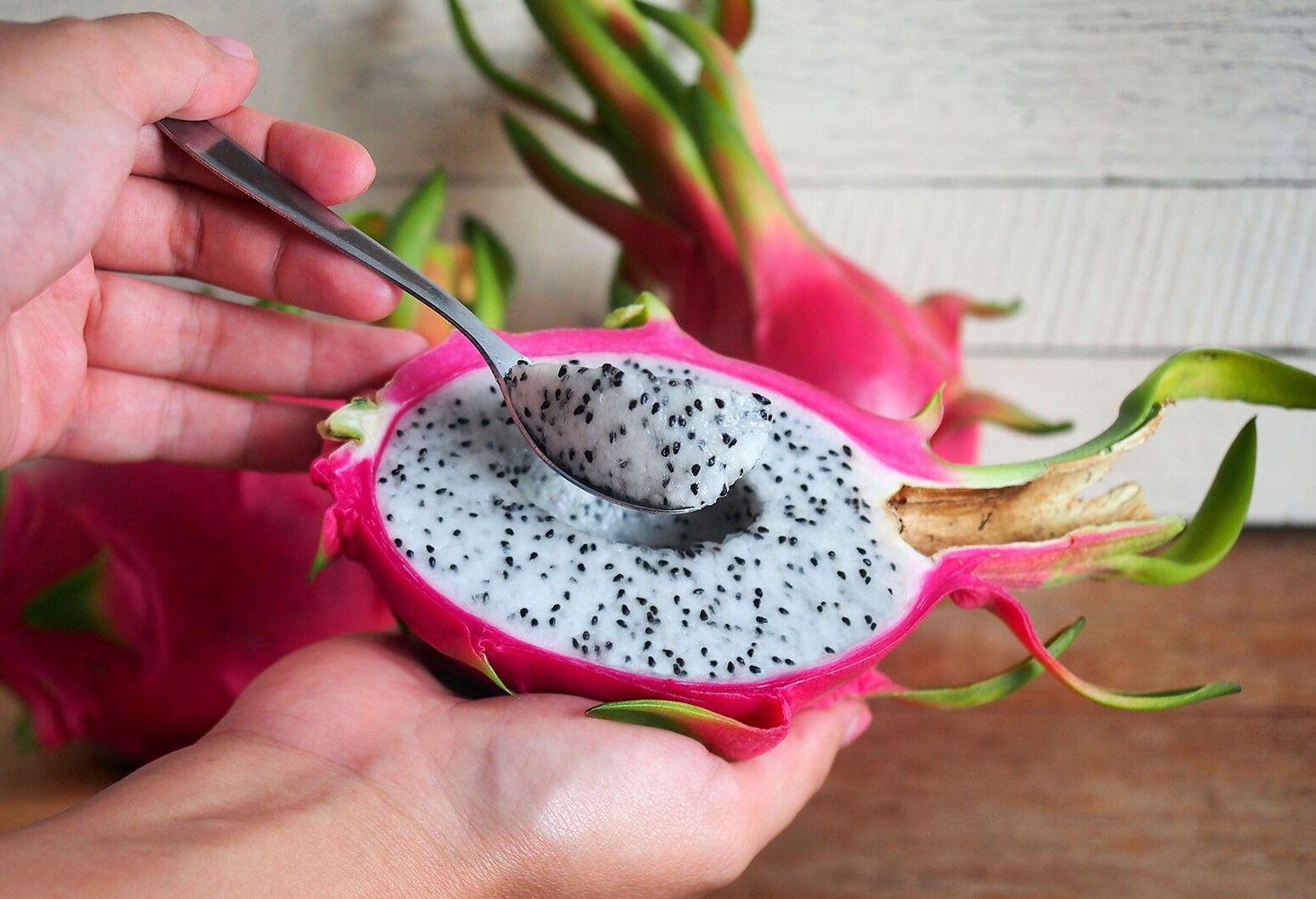

Food and Cooking
How To Eat Dragon Fruit
Published: February 29, 2024
Learn how to eat dragon fruit with our easy guide. Discover tips and recipes for incorporating this exotic fruit into your food and cooking repertoire.
(Many of the links in this article redirect to a specific reviewed product. Your purchase of these products through affiliate links helps to generate commission for Noodls.com, at no extra cost. Learn more)
Table of Contents
Introduction
Welcome to the fascinating world of dragon fruit! If you've ever come across this exotic-looking fruit in the produce section and wondered how to eat it, you're in the right place. Dragon fruit, also known as pitaya, is not only visually stunning with its vibrant pink or yellow skin and speckled flesh, but it also offers a delightful blend of sweetness and subtle crunchiness.
In this comprehensive guide, we'll delve into the intricacies of enjoying this unique fruit to the fullest. From selecting the perfect dragon fruit to preparing and savoring it, we'll cover everything you need to know to make the most of this tropical delicacy. Whether you're a seasoned dragon fruit enthusiast or a curious newcomer, this article will equip you with the knowledge and inspiration to incorporate this exotic fruit into your culinary repertoire.
So, get ready to embark on a flavorful journey as we explore the art of indulging in dragon fruit. Whether you're seeking a refreshing snack, a vibrant addition to your fruit salad, or a creative ingredient for delectable recipes, you'll soon discover the versatility and allure of this captivating fruit. Let's dive in and uncover the secrets of savoring the enchanting dragon fruit!
Read more: How To Cut A Dragon Fruit
What is Dragon Fruit?
Dragon fruit, also known as pitaya, is a visually striking tropical fruit that is renowned for its unique appearance and delightful flavor. This exotic fruit is native to Central America but is now cultivated in various tropical and subtropical regions around the world. The fruit is characterized by its vibrant, leathery skin, which can be pink, red, or yellow, and its speckled or white flesh dotted with tiny black seeds.
There are several varieties of dragon fruit, with the two most common types being the Hylocereus undatus, which has pink skin and white flesh, and the Hylocereus costaricensis, which features vibrant pink or red skin and red flesh. The fruit's exterior is adorned with leafy, spiky extensions, resembling the mythical scales of a dragon, hence its name.
In terms of taste and texture, dragon fruit offers a delightful combination of sweetness and a subtle crunch, making it a refreshing and satisfying treat. The flavor profile is often likened to a cross between a pear and a kiwi, with a hint of floral notes. The flesh is mildly sweet, with a texture that is reminiscent of a melon, interspersed with the crunchiness of the edible seeds.
Nutritionally, dragon fruit is a powerhouse of essential vitamins, minerals, and antioxidants. It is rich in vitamin C, which supports immune function, and contains significant amounts of fiber, which aids in digestion and promotes a feeling of fullness. Additionally, it is a good source of beneficial antioxidants, such as betalains and flavonoids, which help combat oxidative stress and inflammation in the body.
With its captivating appearance, delightful flavor, and impressive nutritional profile, dragon fruit has gained popularity not only as a standalone snack but also as a versatile ingredient in various culinary creations. Whether enjoyed on its own, added to fruit salads, blended into smoothies, or incorporated into desserts and savory dishes, dragon fruit offers a unique and vibrant addition to the culinary landscape.
In the next sections, we will explore how to select a ripe dragon fruit, prepare it for consumption, and savor its delectable flesh. Additionally, we will delve into creative recipes that showcase the versatility of this enchanting fruit, providing inspiration for incorporating it into your culinary endeavors. Get ready to unlock the secrets of enjoying the captivating dragon fruit to the fullest!
Selecting a Ripe Dragon Fruit
When it comes to selecting a ripe dragon fruit, it's essential to consider several key factors to ensure that you bring home a specimen that is at the peak of its flavor and ripeness. The visual appearance, texture, and subtle indicators can provide valuable insights into the fruit's readiness for consumption.
Visual Cues
Begin by examining the outer appearance of the dragon fruit. A ripe dragon fruit typically exhibits vibrant, evenly colored skin with minimal blemishes or discoloration. Whether it's the striking pink or yellow variety, the skin should appear bright and lustrous, devoid of excessive bruising or soft spots. While some spotting is normal and may indicate natural ripening, excessive browning or shriveling may suggest overripeness.
Texture
Gently press the skin of the dragon fruit with your fingertips. A ripe fruit should yield slightly to pressure without feeling overly soft or mushy. The texture should be firm yet slightly yielding, indicating that the flesh inside is succulent and ready to be enjoyed. Avoid fruits that feel excessively firm or rock-hard, as they may require additional time to ripen fully.
Read more: How To Peel Dragon Fruit
Aroma
Another important aspect to consider is the aroma of the dragon fruit. A ripe fruit often emits a subtle, sweet fragrance, reminiscent of a blend of floral and tropical notes. While the aroma may not be overpowering, it should be discernible upon bringing the fruit close to your nose. However, if the fruit exudes a strong, fermented odor or lacks any noticeable scent, it may not be at its prime ripeness.
Petal Formation
Inspect the tips of the leafy extensions, often referred to as "petals," at the top of the fruit. These petal-like structures should appear fresh and vibrant, with minimal browning or wilting. The condition of the petals can provide valuable clues about the fruit's overall freshness and ripeness.
By considering these visual, textural, and olfactory cues, you can confidently select a ripe dragon fruit that promises a delightful eating experience. Once you've chosen the perfect specimen, it's time to explore the next steps in preparing and savoring this captivating fruit.
Preparing the Dragon Fruit
Once you've selected a ripe and enticing dragon fruit, the next step is to prepare it for consumption. While the exterior of the fruit may appear intimidating with its spiky, vibrant skin, preparing a dragon fruit is a straightforward process that unveils the treasure within.
Step 1: Wash and Dry
Begin by rinsing the dragon fruit under cool running water to remove any surface impurities or residues. Gently scrub the skin with a soft brush to ensure thorough cleaning. Once washed, pat the fruit dry with a clean kitchen towel or paper towel.
Read more: How To Determine When A Dragon Fruit Is Ripe
Step 2: Trim the Ends
Using a sharp knife, carefully slice off the leafy protrusions at the top and bottom of the fruit. This will create stable, flat surfaces for the fruit to rest on during further preparation.
Step 3: Slice and Peel
With the fruit stabilized on one end, make a lengthwise cut along the skin, ensuring not to pierce the flesh. Once the incision is made, gently peel back the leathery skin to reveal the luscious, speckled flesh inside. The flesh can be easily scooped out with a spoon or cut into cubes, depending on your preference.
Step 4: Serve and Enjoy
The prepared dragon fruit can be served in various ways, whether as a standalone snack, a colorful addition to fruit salads, or a delightful topping for yogurt and desserts. Its subtly sweet flavor and crunchy texture make it a versatile and visually appealing ingredient in a myriad of culinary creations.
By following these simple steps, you can unlock the captivating essence of the dragon fruit and savor its delectable flesh with ease. Whether enjoyed on its own or incorporated into creative dishes, the preparation process reveals the alluring beauty and delightful flavor of this exotic fruit, inviting you to indulge in its tropical allure.
Eating the Dragon Fruit
Once the dragon fruit is prepared and its luscious flesh is revealed, it's time to indulge in its captivating flavor and delightful texture. Eating dragon fruit is a sensory experience that offers a perfect balance of sweetness and subtle crunchiness, making it a truly satisfying treat. Whether you choose to enjoy it as a standalone snack or incorporate it into creative culinary creations, savoring the flesh of this exotic fruit is a delightful endeavor.
When it comes to eating dragon fruit, there are several approaches to relishing its succulent flesh. One popular method is to simply scoop out the flesh with a spoon, allowing you to savor the fruit's natural sweetness and enjoy the subtle crunch of the edible seeds. The flesh can be savored on its own, allowing you to appreciate the unique flavor profile and refreshing juiciness of the fruit.
Another enjoyable way to eat dragon fruit is to incorporate it into fruit salads, smoothie bowls, or yogurt parfaits. The vibrant speckled flesh adds a visually stunning element to these dishes, elevating their aesthetic appeal while imparting a delightful burst of flavor. Whether combined with other tropical fruits or layered with creamy yogurt and granola, dragon fruit enhances the overall sensory experience, making each bite a symphony of flavors and textures.
For those with a penchant for culinary experimentation, dragon fruit can be used as a creative ingredient in various recipes. From refreshing smoothies and exotic fruit sorbets to vibrant fruit tarts and colorful salsas, the versatility of dragon fruit lends itself to a wide array of culinary applications. Its subtle sweetness and visually striking appearance make it a captivating addition to both sweet and savory dishes, allowing you to explore new dimensions of flavor and presentation.
Whether you choose to eat dragon fruit in its natural form, incorporate it into culinary creations, or explore innovative recipes, the act of savoring this exotic fruit is a celebration of its vibrant allure and delightful flavor. With each bite, you'll experience a harmonious blend of sweetness, juiciness, and subtle crunch, inviting you to immerse yourself in the tropical essence of the enchanting dragon fruit.
Recipes Using Dragon Fruit
Dragon fruit's vibrant appearance and delightful flavor make it an ideal ingredient for a variety of creative and visually stunning recipes. Whether you're looking to infuse your culinary creations with a tropical twist or add a pop of color to your dishes, dragon fruit offers a versatile canvas for culinary experimentation. From refreshing beverages to delectable desserts, the following recipes showcase the captivating potential of this exotic fruit.
Dragon Fruit Smoothie Bowl
This vibrant and nutritious smoothie bowl is a feast for the eyes and the taste buds. To prepare this refreshing dish, blend ripe dragon fruit chunks with frozen bananas, coconut milk, and a splash of lime juice until smooth. Pour the luscious pink mixture into a bowl and adorn it with an array of colorful toppings, such as sliced kiwi, fresh berries, granola, and shredded coconut. The result is a visually stunning and deliciously satisfying treat that offers a delightful medley of flavors and textures.
Dragon Fruit Salad with Citrus Dressing
Elevate your salad game with a refreshing and visually striking dragon fruit salad. Combine cubed dragon fruit with segments of juicy oranges, grapefruit, and pomelo to create a vibrant fruit medley. Drizzle the salad with a zesty citrus dressing made from freshly squeezed lime juice, honey, and a hint of mint. The combination of sweet, tangy, and citrusy flavors, coupled with the crunchy texture of the dragon fruit, makes this salad a refreshing and palate-cleansing delight.
Dragon Fruit Sorbet
Indulge in a tropical escape with a homemade dragon fruit sorbet that captures the essence of summer. Blend ripe dragon fruit flesh with a touch of honey and a squeeze of lime juice, then freeze the mixture until it reaches a luscious, scoopable consistency. The result is a refreshing and vibrant sorbet that boasts a captivating pink hue and a delightful balance of sweetness and tanginess. Garnish with fresh mint leaves for an extra burst of freshness.
Dragon Fruit Salsa
Add a burst of color and flavor to your culinary repertoire with a vibrant dragon fruit salsa. Combine diced dragon fruit with finely chopped red onion, jalapeño, cilantro, and a splash of lime juice to create a refreshing and visually appealing salsa. This versatile condiment pairs beautifully with grilled fish, shrimp tacos, or crispy tortilla chips, offering a delightful contrast of sweet, savory, and tangy notes.
These enticing recipes demonstrate the versatility and allure of dragon fruit as a captivating ingredient in a wide range of culinary creations. Whether incorporated into refreshing beverages, vibrant salads, frozen treats, or zesty salsas, dragon fruit adds a tropical touch and a visually stunning element to your dishes, inviting you to explore new dimensions of flavor and presentation.
Conclusion
In conclusion, the enchanting dragon fruit, with its vibrant appearance, delightful flavor, and impressive nutritional profile, offers a captivating culinary experience that transcends the ordinary. From the moment of selecting a ripe specimen to savoring its luscious flesh, the journey of indulging in dragon fruit is a celebration of tropical allure and sensory delight.
As we've explored the intricacies of enjoying this exotic fruit, it's evident that dragon fruit holds a special place in the realm of culinary creativity. Whether enjoyed in its natural form, incorporated into vibrant recipes, or used as a visually stunning ingredient, the versatility of dragon fruit knows no bounds. Its subtle sweetness, refreshing juiciness, and subtle crunch make it a versatile addition to a wide array of dishes, from refreshing smoothie bowls to vibrant fruit salads and exotic salsas.
The act of savoring dragon fruit is not merely a gustatory experience but a journey into the tropical essence of this captivating fruit. With each bite, one can revel in the harmonious blend of flavors and textures, transporting the senses to sun-kissed landscapes and lush tropical paradises. Whether relishing it as a standalone snack, incorporating it into culinary creations, or exploring innovative recipes, dragon fruit invites culinary enthusiasts to embark on a flavorful adventure that transcends boundaries and ignites the imagination.
In essence, the allure of dragon fruit lies not only in its visual appeal and delightful flavor but also in its ability to inspire creativity and culinary exploration. As you venture into the realm of dragon fruit, may you discover the endless possibilities it offers and find joy in incorporating this exotic fruit into your culinary repertoire. Whether you're seeking a refreshing snack, a vibrant addition to your dishes, or a creative ingredient for innovative recipes, let the enchanting dragon fruit be your guide to a world of tropical indulgence and culinary inspiration.

